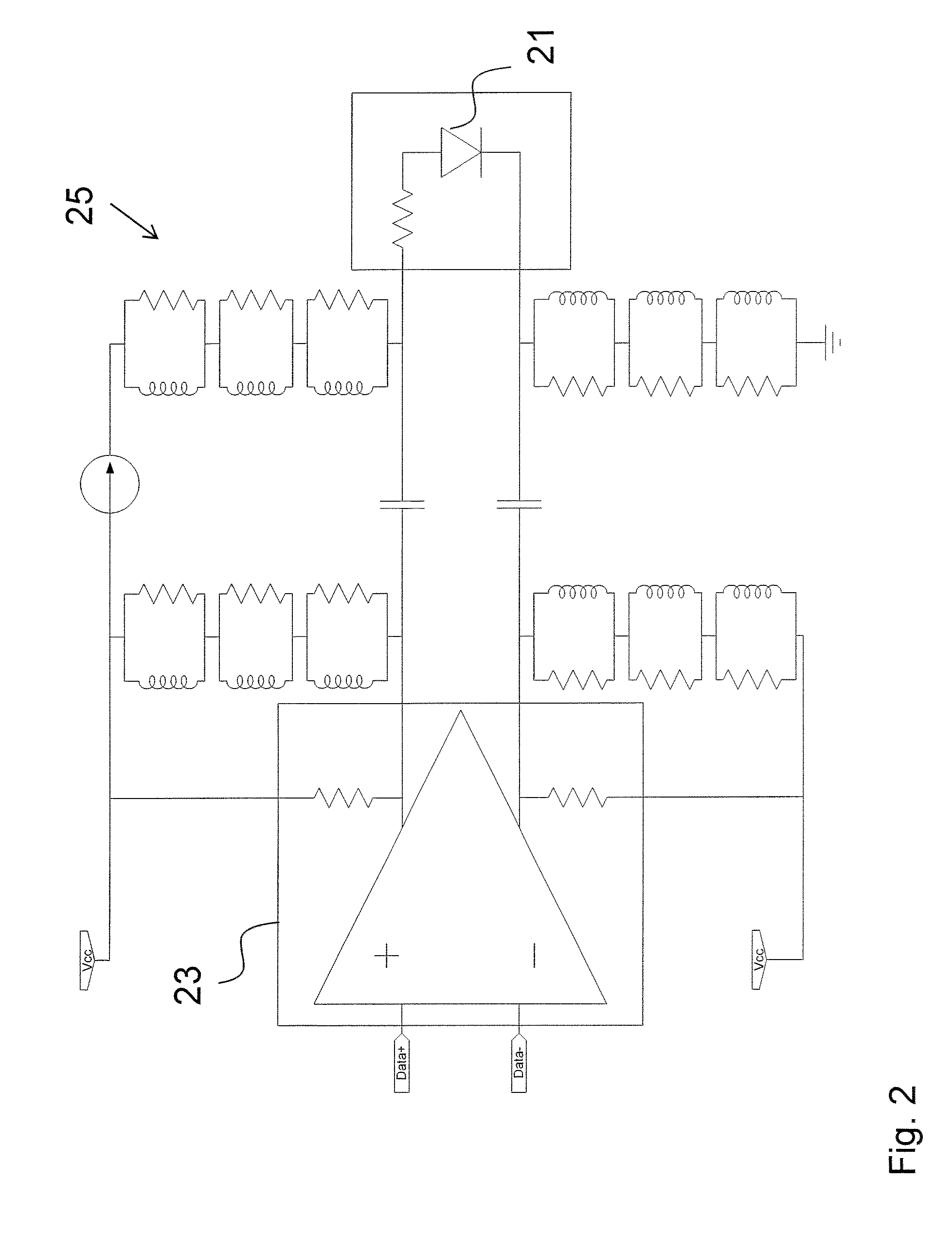Semiconductor laser device and circuit for and method of driving same
a laser device and semiconductor technology, applied in the direction of laser optical resonator construction, laser details, laser output parameters control, etc., can solve the problems of increasing the cost of parallel ribbon fibers, increasing the difficulty of transmitting multiple wavelengths at the same time, and reducing the number of passive components. , the effect of eliminating costly and bulky bias tees
- Summary
- Abstract
- Description
- Claims
- Application Information
AI Technical Summary
Benefits of technology
Problems solved by technology
Method used
Image
Examples
second embodiment
[0072]A second embodiment is to replace the 2-section DFB laser with a 2-section Fabry-Perot (FP) laser or distributed Bragg reflector (DBR) laser. In this embodiment the front facet or distributed reflector contributes to lasing of the rear section. Therefore the DC current to the rear section needs to be high enough such that the optical power emitted by the rear section is high enough to bleach through the front section as to provide enough reflected optical power from the front facet or front distributed reflector. In some embodiments the DBR laser may have a long waveguide including a short active region, for example with lengths of 600 microns and 100 microns, respectively.
third embodiment
[0073]A third embodiment uses a three-section phase-shifted DFB laser with symmetric modulation, for example, as illustrated in FIG. 15. To maintain the single mode selectivity of the phase shifted DFB, the device has anti-reflection coatings on both facets, and is separated into three sections, two outer sections 1510 and 1520 and a middle section 1530. A current to the middle section is fixed above its lasing threshold. The two outer sections and facets are generally not essential in achieving lasing. The two outer sections are modulated in parallel from zero current to a modulation current that is split equally between the two outer sections. As the sections are electrically isolated and the modulated sections generally do not need a DC pre-bias current, there is no need for bias tees and the number of passive components in the circuit connecting the laser diode driver and the laser diode is significantly reduced.
[0074]A drawback of the third embodiment is that due to symmetry th...
ninth embodiment
[0079]A ninth embodiment is a variation on all previous embodiments using a laser driver that provides small adjustable DC pre-bias on the output lines without use of bias tees, allowing for some small pre-bias on the modulated section, which can improve the dynamic performance of the laser in certain cases.
[0080]Aspects of the invention therefore include directly modulated lasers in which modulation current is provided to only portions of the laser and methods and circuits for providing modulation current. Although the invention has been discussed with respect to various embodiments, it should be recognized that the invention includes the novel and non-obvious claims supported by this disclosure and the insubstantial variations of same.
PUM
 Login to View More
Login to View More Abstract
Description
Claims
Application Information
 Login to View More
Login to View More - R&D
- Intellectual Property
- Life Sciences
- Materials
- Tech Scout
- Unparalleled Data Quality
- Higher Quality Content
- 60% Fewer Hallucinations
Browse by: Latest US Patents, China's latest patents, Technical Efficacy Thesaurus, Application Domain, Technology Topic, Popular Technical Reports.
© 2025 PatSnap. All rights reserved.Legal|Privacy policy|Modern Slavery Act Transparency Statement|Sitemap|About US| Contact US: help@patsnap.com



